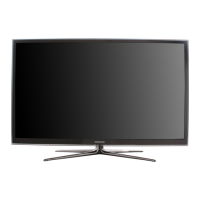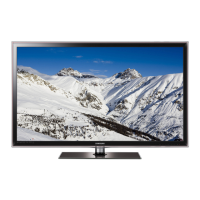Do you have a question about the Samsung UN46F8000BFXZA and is the answer not in the manual?
Choose the optimal picture mode for your TV viewing conditions.
Adjusts the brightness of individual pixels.
Adjusts the brightness of the panel.
Adjusts the screen contrast.
Adjusts the overall brightness.
Sharpens or dulls the edges of objects.
Adjusts the overall color saturation.
Adjusts the ratio of green to red.
Apply picture quality settings to all external devices or current input.
Set the picture to the 16:9 wide-screen format.
Enlarge aspect ratio to fit entire screen.
Sets the picture to basic 4:3 mode.
Displays the full image without any cutoff.
Automatically adjusts the screen contrast.
Adjusts the black color depth.
Adjusts the amount of red in skin-color tones.
Adjusts the red, green, and blue levels individually.
Adjusts the color tone.
Reduces static and ghosting caused by weak signals.
Reduces MPEG noise and improves video quality.
Sound modes make adjustments to the sound output.
Calibrate TV for the optimal sound quality.
Modify existing custom sound profiles.
Rename or delete custom sound profiles.
Set the clock manually or automatically.
Automatically shuts off the TV after a preconfigured period.
Adjusts brightness and prevents overheating to reduce power.
Technology to reduce the possibility of screen burn.
Create and manage your Samsung account.
Customize and manage installed TV applications.
Configure repeat, picture size, rotate, sound, audio language.
Configure repeat, shuffle, sound mode, information.
Adjust slideshow speed and effects.
Configure zoom, rotate, picture/sound mode.
Enable/disable Anynet+ features and set up devices.
Access device menus and tools via remote panel.
Allow Samsung to remotely diagnose and repair your TV.
Diagnose TV for picture, sound, and signal issues.
Download and install software updates online.
Automatically upgrade TV software in Standby Mode.
Troubleshoot flickering or dimming picture.
Troubleshoot TV turning off unexpectedly.
Check connected device volume and speaker settings.
Check signal information for sound distortions.
Check for interference and ensure glasses are on.
Turn off 3D glasses when not in use.
Set PC output resolution to match TV.
Check PC audio output and HDMI connection.











